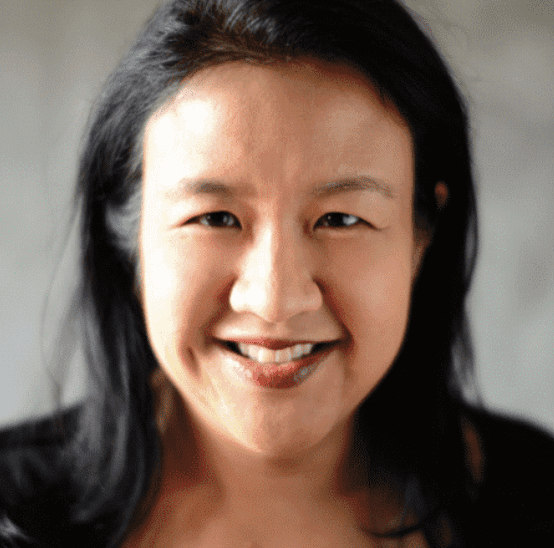
Inside his small bakery on Manhattan’s Lower East Side, Adir Michaeli crafts pastries that honor the culinary traditions of his native Israel. His Israeli cheesecakes rise high and light. His neatly braided loaves of babka nestle luscious amarena cherries into ricotta cheese. His signature “Pastry Galil,” a sweet-savory puff pastry round filled with goat cheese, drizzled with honey, and showered with fragrant za’atar spice mix, prompts the most passionate responses from customers. “Israelis come in here and they say, ‘You know what? I bite into it and I feel at home,’” Michaeli says. “Americans say, ‘I feel like I’m on vacation.’”
Michaeli Bakery is one of the newest additions to the New York-New Jersey area’s collection of classic and modern Middle Eastern bakeries. These bakeries serve as familiar stops for those with roots in the Middle East, delightful culinary tours for everyone else, and endless sources of inspiration for cheese-lovers. Michaeli worked in Tel Aviv before moving to the United States to become the pastry chef at the acclaimed Breads Bakery, an Israeli-style operation whose chocolate babka was named the best in New York City by New York Magazine. In 2019, he struck out on his own, opening his eponymous bakery in order to dive even more deeply into the world of Israeli pastries. He is continually looking for ways to adapt the classics of his childhood for a hungry American audience.
Take his Israeli cheesecake, for instance. Its delicate texture is a far cry from the dense thickness of the ubiquitous New York version. Michaeli says that in Israel that’s usually due in part to the soft cheese known as gvina levana. But after Michaeli moved to the United States, he discovered that gvina levana was hard to find and expensive. So, he devised a cheesecake recipe that uses cream cheese, sour cream, and egg whites to achieve the same lofty fluffiness. An equal amount of egg yolks gives the cake a faintly buttercup-yellow hue, and it’s all anchored with a buttery shortbread crust. This cheesecake is most popular around Shavuot, the Jewish holiday that falls in May or June, but Michaeli’s customers are happy to purchase it year-round.
Michaeli has also worked to perfect his cheese and cherry babka, another popular Shavuot treat that he offers occasionally throughout the year. He experimented to achieve a filling that was just moist enough without being watery: he says he uses ricotta mostly for volume, balancing it out with sour cream and cream cheese, accenting everything with the powerfully flavored cherries.
On the savory side, he takes great pleasure in baking his crispy filled burekas, an Israeli street-food favorite. He offers options filled with sauteed spinach, or mashed potato and parsley, or portobello and crimini mushrooms. The most popular and memorable is the pizza bureka, a staple in Israel that Michaeli began making because he had a hard time finding them here. He brushes the pastry with a tomato sauce that gets its deep umami flavor from olive tapenade, and tops all of it with feta and gouda cheese. “Everything I do, everything I make, I want to deliver the experience of the Israeli bakeries,” he says. This includes his version of one of the most well-known Middle Eastern cheese desserts, knafeh. Made in a number of countries and spelled a number of ways (including kenafa, kunefe, kanafa, and kanafeh) the dessert typically layers melted white cheese under a crisp topping of shredded phyllo, all of it bathed in sweet syrup. Michaeli’s version combines goat cheese with the milder mozzarella to produce a dessert like the one he grew up eating throughout Israel: he said Israelis usually make the dish with goat cheese from their local farms.

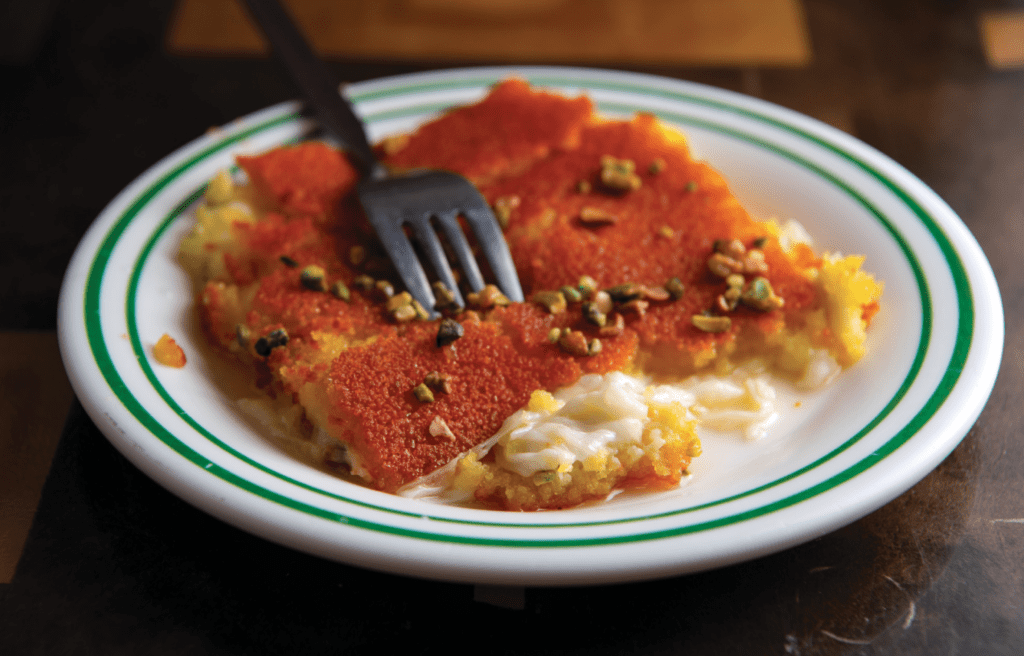
FROM PALESTINE TO PATERSON
Knafeh has become so popular in the United States that Trader Joe’s has it in the freezer case. But a benchmark version of it can be found about 15 miles west of Manhattan, in a busy Middle Eastern enclave in South Paterson, New Jersey. Nablus Sweets—named for the city in its owners’ native Palestine—opened as a small shop in 1996 and has since grown into an expansive bakery, its long counter groaning with different types of sweet baklava and date-stuffed ma’amoul cookies. But many customers are here for the pistachio-flecked knafeh; co-owner Al Abedrabbo says the shop serves several hundred pounds a week.
While many other bakeries and restaurants buy the shredded phyllo, Nablus makes it in-house using a special machine that pushes the fresh dough through a mold into strands that bake on a special burner. The bakery layers the dough with a combination of mozzarella and akkawi, a firm salted, white cow’s milk cheese that Abedrabbo says firms up the stretchy mozzarella.
Nablus offers three types of knafeh: one topped with crunchy coarse strands of phyllo, one topped with fine strands for a slightly sandier topping, and “knafeh rolls,” with shredded phyllo encasing the cheese filling.
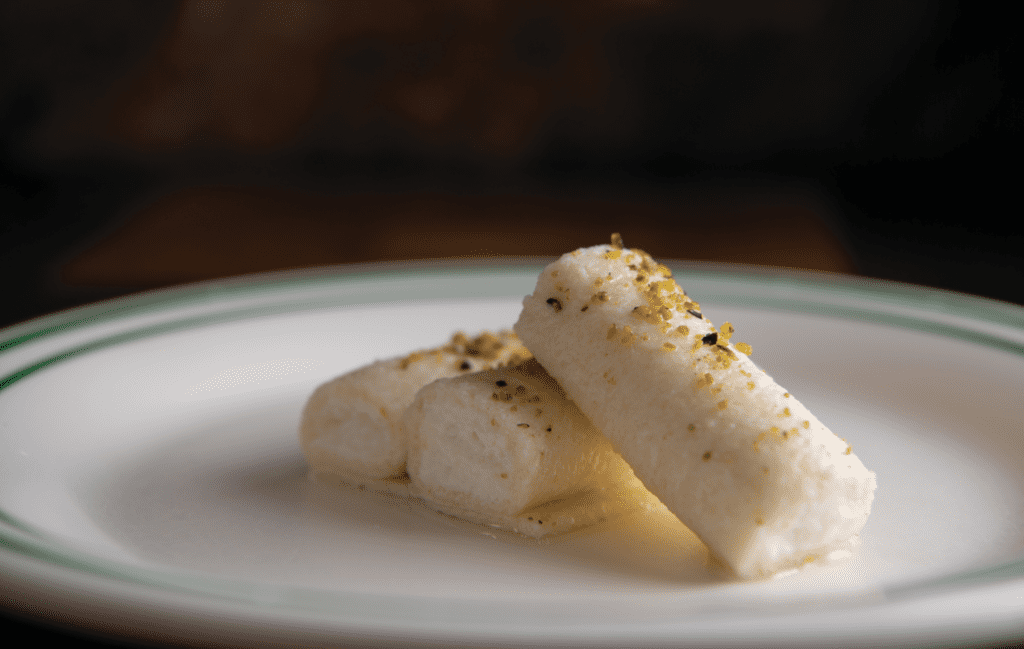
Nablus also offers a much more delicate Arabic dessert called halawet el jibn: cold, dainty rolls made from a dough of semolina flour and fresh mozzarella. Nablus’ employees drizzle the rolls with rosewater-scented syrup and sprinkle on pistachios to order. During Ramadan, the most sacred time of year for Muslims, the bakery offers a traditional celebratory treat: stuffed cheese pancakes called katayef (also spelled atayef and qatayef). “It reminds you of home,” Abedrabbo says.
TURKISH DELIGHTS
A few blocks away, that same philosophy gave birth to Taskin Bakery, one of the region’s most well-known Turkish bakeries since 1997. Taskin Bakery has since evolved into a popular place for non-Turkish Americans as well. Founded by Kadir and Naciye Taskin, the family-run Paterson bakery has long produced thick pide bread and other baked treats for Turkish restaurants in the tri-state area. Recently, it opened an adjacent, 24-hour cafe with a warm atmosphere and an all-star lineup of pastries, including many stuffed with generous amounts of cheese. The poğaças fly off the shelves: rich, tender butter-bread buns stuffed with a mixture of Turkish and Greek feta cheese (other versions feature spinach and cheese, meat, and potatoes). Mini poğaças, which resemble snack-sized cheese sandwiches, are also popular.

Customers seeking something a little less rich might order an aycorek, a fluffy horseshoe-shaped bread filled with feta. The same crumbly feta is tucked inside a crispy triangle of puff pastry called a talash. Popular for breakfast: gozleme, sort of a flatbread sandwich stuffed with feta and mozzarella, often eaten alongside tomato and lettuce. And of course, Taskin offers a wide variety of filled crispy böreks, from the traditional long filled rectangles to some baked in the shapes of spirals and flowers.
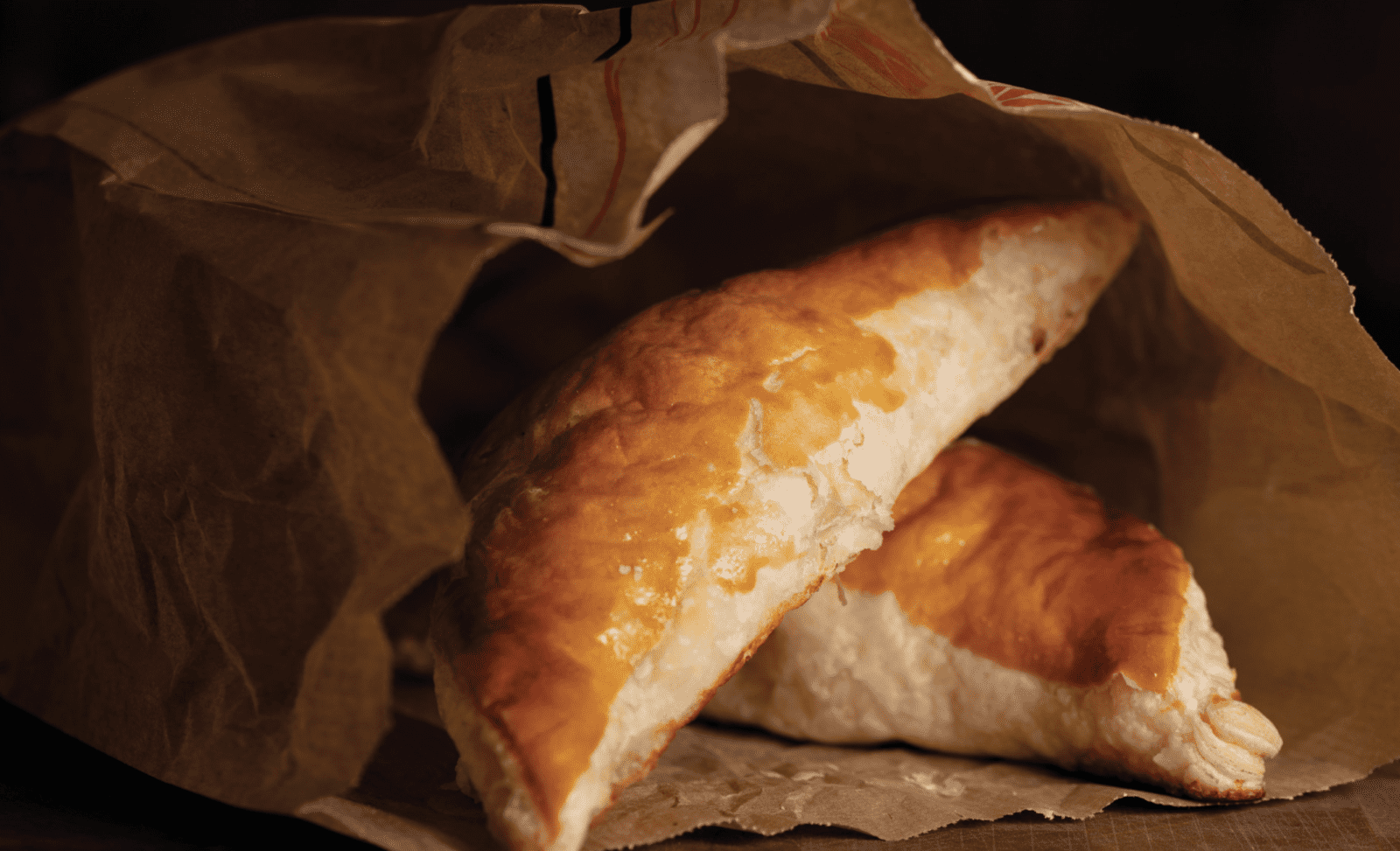
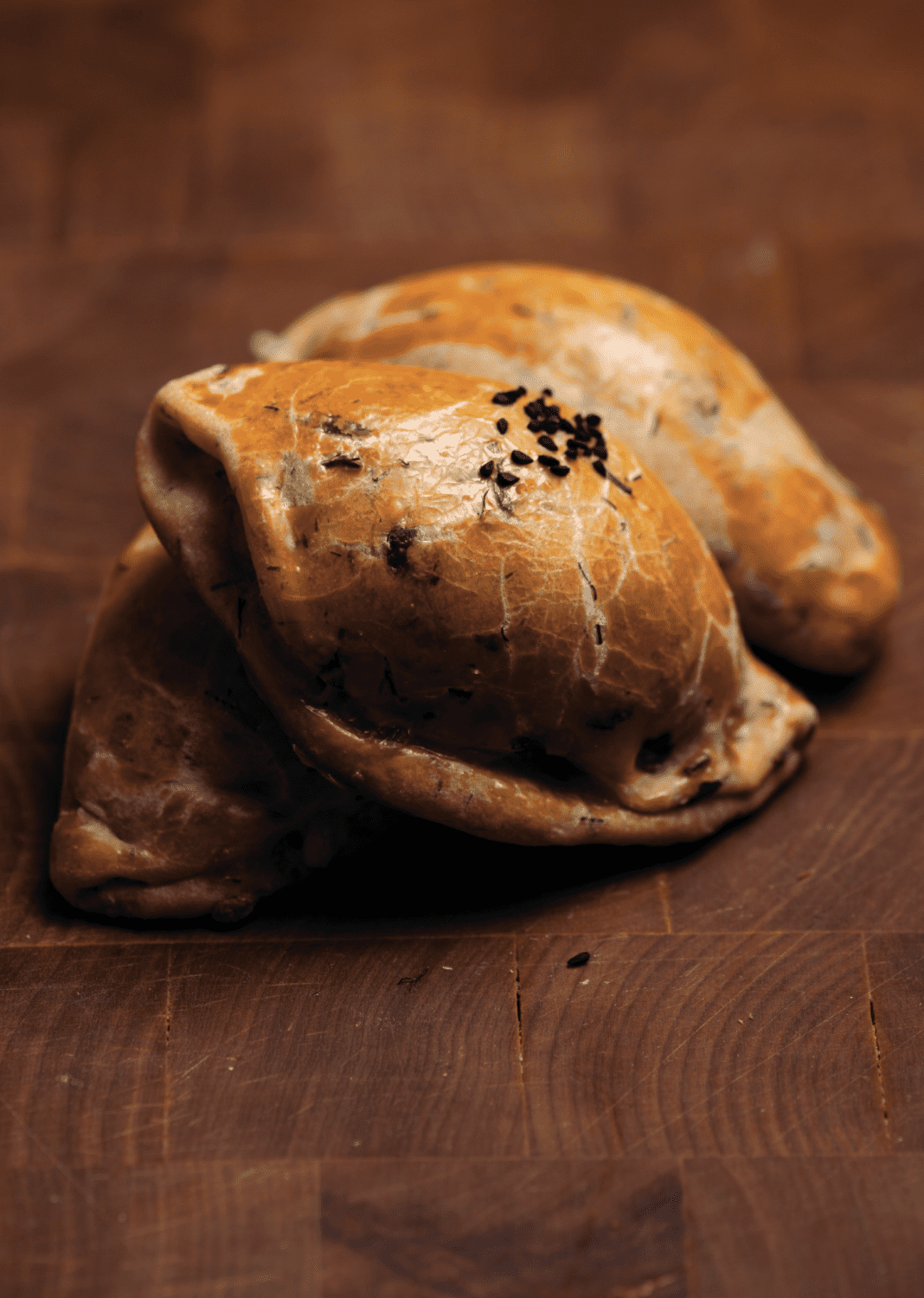
One of Taskin’s hard-to-make specialties is su böre i, a “water pastry” that resembles a layered lasagna slice. With layers of boiled phyllo and feta cheese, each slice bears tantalizing crisp edges. Its cousin is kol böre i, a long roll of puff pastry that, when sliced, is like a flaky cheese pull-apart bread. It can be eaten warm, but Dudu Nur Taskin, the daughter of the founders, prefers it cold, garnished with cucumber, tomato and lettuce, and washed down with ayran, a salted yogurt beverage. Nur Taskin says the bakery has a loyal following of non-Turkish customers who “want to try something different.” And in Taskin’s selection of cheese pastries, they find familiarity, variety, and comfort.
A World of Cheese at Nouri Brothers
At the age of 21, Al Noury took over a bakery in Paterson, New Jersey, with his family, ethnic Armenians who came to the United States from Syria. It was 1978, and Nouri Brothers was born (with the spelling used by other relatives). Today, the busy store is celebrating more than four decades of selling Middle Eastern groceries, baked goods, spices, and gifts to the South Paterson region: both goods and atmosphere “make you feel like you are overseas,” Noury says. Its family cafe serves a wide variety of appetizers, grilled meats, and baked pies (including a “Syrian Pizza” topped with pepper paste instead of tomato sauce, as well as Greek feta, mozzarella, provolone, and the spicy sausage known as sujuk).

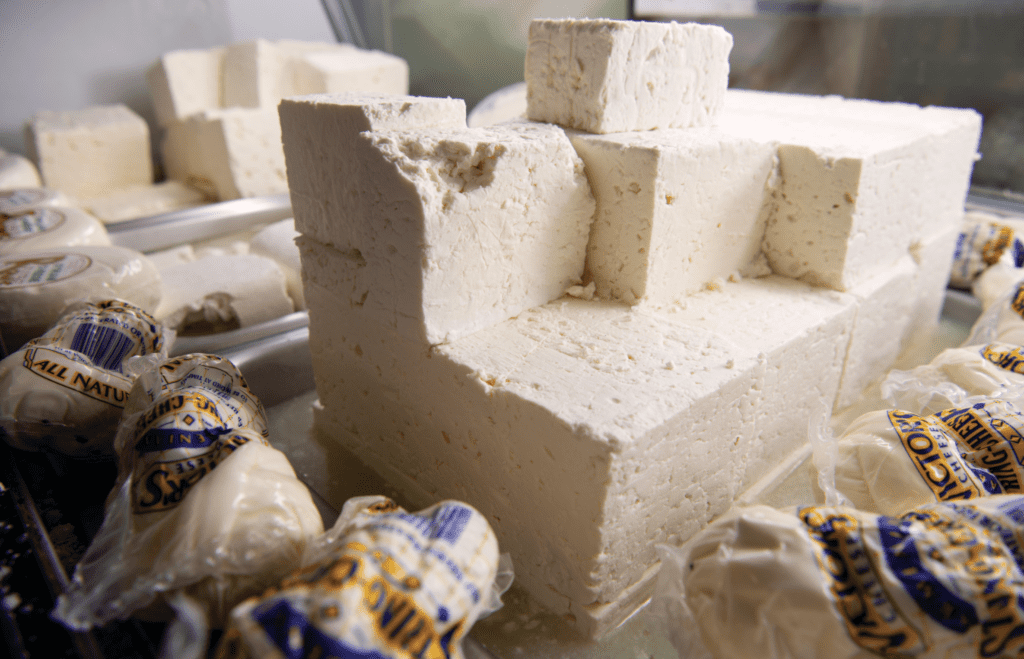

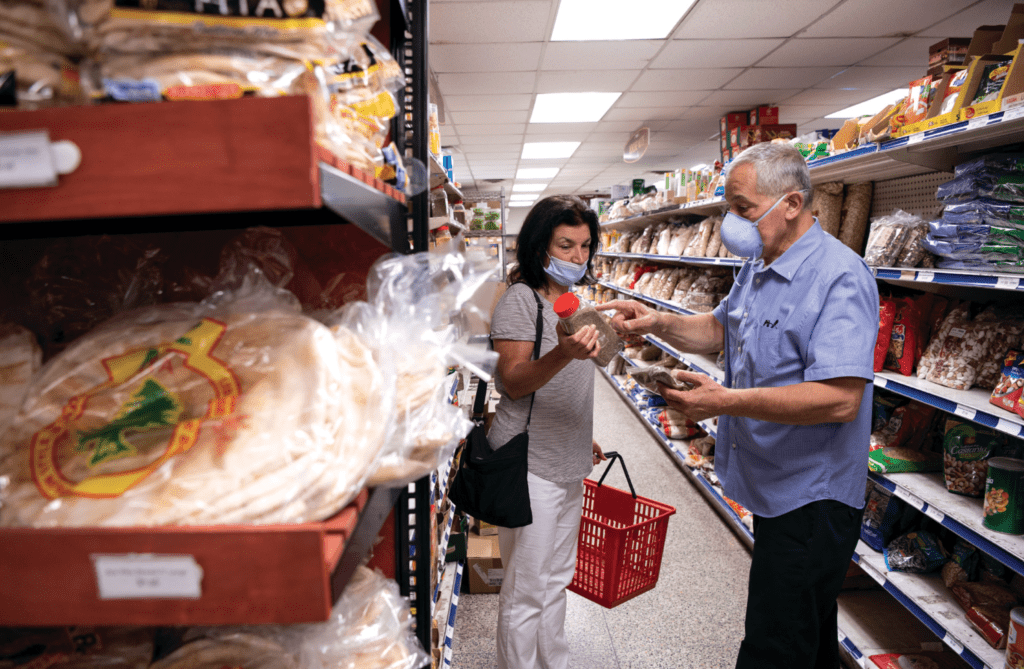
Many of Nouri’s customers make a beeline for the bustling cheese counter. The shop carries between 65 and 100 types of cheeses, focusing on Middle Eastern and European selections; some are sold by the pound, while others are packaged or canned. Noury says his Middle Eastern customers love eating cheese with fresh fruit in the summer and with tea and olives for breakfast in the winter. He offered a tour through the most notable cheeses available by the pound:
SWEET CURD:
A mild, unsalted cow’s milk cheese that is a bit harder and drier than mozzarella. It is frequently used in knafeh, Noury says, and its lack of salt means it is highly perishable.
AKKAWI:
A lightly salted version of sweet curd cheese, often eaten cold and sliced. Nouri Cafe serves it on a baked cheese pie.
NABLUSI:
An intensely salted cow’s milk cheese, dotted with Nigella seeds (also known as black caraway seeds). Nouri usually carries one made in the United States, but sometimes sells an imported type made in Jordan from sheep’s milk.
GHARIBIAN ANGEL HAIR:
An Armenian-style cow’s milk string cheese with fine strands, also intensely salted and dotted with Nigella seeds. Noury says his staff sometimes makes this in house when time permits.
SHINGLESH:
Nouri’s staff makes this in-house, mixing the odds and ends left from their cheese counter with labne (a type of yogurt), pepper paste, and spices, then drying all of it into a crumbly cheese that is often eaten in a salad.


